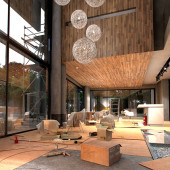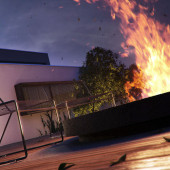Linear Workflow made Simple by Matt Gorner
Much has been written about Linear Workflow (LWF) and you can find many tutorials and articles about this subject on the web… but none was as simple to understand and so pleasing on the eyes as this screencast by Matt Gorner that I stumbled upon today while researching how to make my VRay RT previews look like my renders.
The Beginners Explanation of Gamma Correction & Linear Workflow – PDF














Just perfect, great tutorial.
But can find how to de gamma precisly my textures, in order to use linear workflow.
Any ideas?
I’m not sure I understand what you’re asking – can you please elaborate on that?
Im sorry, my written english sucks…
i was asking how to apply 1.0 gamma input into textures in order to get linear workflow before rendering. At least that is what i undertood from the screencast.
But now, after searching in next limit forum, it doesnt really matter. I use maxwell render which applys a -2.2 gamma in all textures before rendering, so what you get is an image with a linear gamma, then you can apply whatever gamma you want.
hope i made myself clear.
I deal with it in this way: A linear work flow is just that so I know with my 3d package that I can effect the way it handles things [and the renderer]. I can force them to work in a linear space. However, most images have the gamma correction [2.2] ‘burned in’ so if we don’t let the 3d package know they are already in 2.2 space then the gamma correction it will apply will be doubled up on these images – thats how we get the washed out textures he shows. In max when I import a texture I specify that it is in gamma 2.2 and this produces the correct saturation of the textures. I’m not sure if this is what is termed ‘de-gamma’ in the above link but it effectively tells max that the textures are starting from 2.2 rather than 1 [linear]
you got it! i used the term “de-gamma” because thats what Matt Gorner said in its video. Thaks MA
didn´t know max could do that…
Thanks for the share, I have come across so many variations of using LWF that it can get a bit confusing. At the moment I use a variation of Aversis’ method but I’ll definately try this out.
Checking that too… I’m still having issues with getting VRay RT to show exactly like the render with LWF. Would appreciate your input on that 🙂
I’m not too familiar with RT but one thing that comes to mind is that there might be a setting/button to enforce sRGB space like with the VFB. The other option might be to try colour mapping – setting it to ‘gamma correction’ and set the bright multi. to 1/2.2 [0.454] Using colour mapping will bake in the gamma so you won’t need to save with a gamma 2.2 override. Let me know if that is of any help, Regards MA.
Nice… a curious way, when I can try vray rt, use it.
thanks.
Whoah, fame! (Someone pointed me to this Blog) 🙂
Glad you liked the tutorial. I do need to update it to include some more accurate information.
By the way, the videos are also available on YouTube:
http://www.youtube.com/user/pixsimdesign
Cheers
Matt
Finally a tutorial that makes it very very clear.
Thanks for the great work.
Im sorry but I have max 2012. looks like my gamma is already 2.2. I don’t understand how to properly alter images that are used for materials to be set up to use gamma in later image production?
For instance I have noticed that flooring materials that I “stole” from school always show up washed out, I assume from this. What do I do to these images to correct this?
thanks